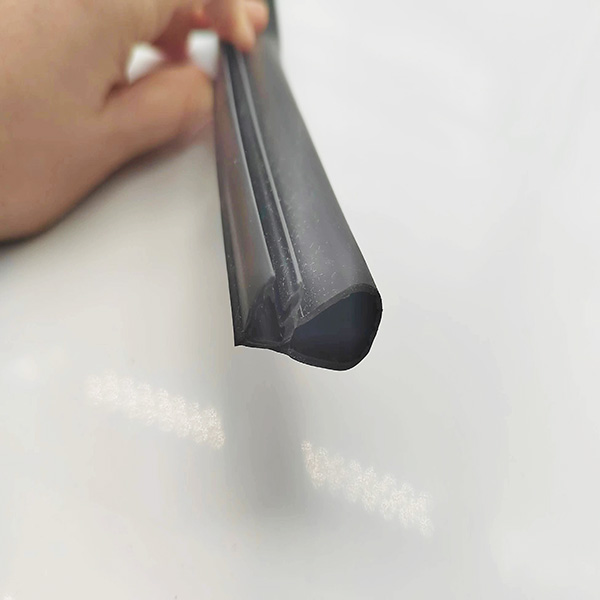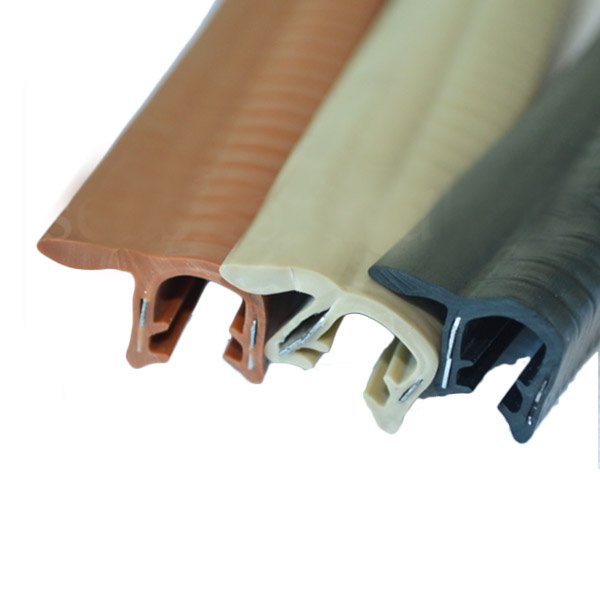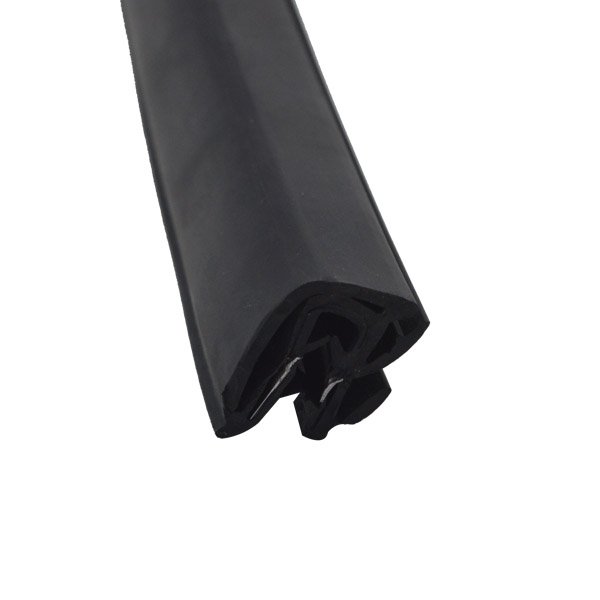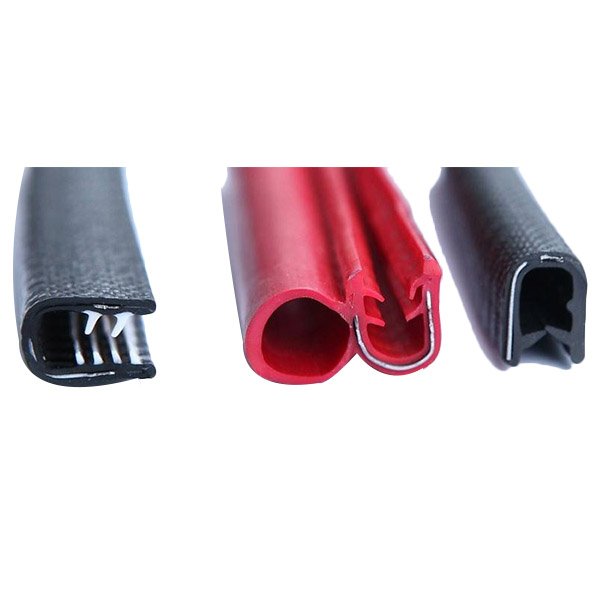Metal edge protectors are usually one type of edge trim. You can also call it seal strips, edge guards, or edge seals. However, these seals are mainly designed to protect metal edges. They primarily prevent damage and enhance safety.
These metal edge guards come in various shapes and sizes, each ideally suited to different applications. They also come in multiple materials. Metal, rubber, and plastic are widely used in edge trim manufacturing.
Metal Edge Protectors: Why are they Important?
As you already know what metal edge protectors are and how they work, you can guess why you need them. In a sentence, they ensure safety, keep your substrate in good shape, and give it a good look. However, they mainly give you seven primary benefits.

Reason #1 Safety
Metal edge protectors save you from injuries or equipment damage. As you know, they cover sharp edges to prevent cuts and abrasion. In the workplace, these metal edge trims create a safer workplace environment. As a result, using these rubber trims minimizes the risk of injuries.
If you check safety compliance, you will find that creating a safe working environment is the priority. In this case, metal edge trim plays a crucial role.
Reason #2 Protection Against Impact
Metal edge protectors are usually made of rubber or plastic. They are mainly designed to deflect and absorb impacts. Common materials used in this case are TPE, silicone, EPDM, and PVC. These materials have excellent cushioning abilities, preventing dents, scratches, and other damage.
Since they reduce wear and tear, edge trims eventually extend the life of metal components. This is especially necessary in industrial and public areas.
Reason #3 Maintaining the Structural Integrity of The Covered Substrate
As you know, rubber edge trims absorb impact. As a result, your metal equipment does not bend or warp during impact. It technically maintains the original shape of the component.
Rubber edge trim generally distributes stress and load evenly across the edge to ensure no localized damage. Overall, it ensures that your metal tool remains intact over time.
Reason #4 Durability
In addition to absorbing impact, metal edge protectors offer other benefits. Corrosion and weather resistance are noteworthy. EPDM, PVC, and TPE—all these rubber or plastics offer excellent resilience. You can use them in many outdoor jobs.
As you can see, rubber edge trims protect your equipment from impacts. They also work excellently against corrosion. You can also use them for sealing purposes. So you can see that these rubber trims will finally make your metal equipment last longer.
Reason #5 Appearance
Metal edge trims can be made of various materials, such as metal, rubber, or plastic. All these materials can be designed or customized.
Rubber edge guards usually come in various colors and finishes. During custom manufacturing, you can choose your design. Overall, they give your metal equipment a clean and polished look.
Reason #7 Specific Application
The final reason for getting a rubber edge trim is its specific purpose. Metal edge protectors can be used around doors, windows, machinery, cars, and furniture. We will discuss their applications in the next section.
Types of Metal Edge Protectors
Metal edge protectors are often available in many types. This diversity is caused mainly by multiple edge configurations and specific application requirements. The following six types are the most often used in every application.
U Channel Rubber Edge Trim
As the name suggests, this edge trim is shaped like a “U” to fit over the edges. They are mostly made of PVC rubber with a metal core. These metal edge protectors are highly flexible and easy to install. However, rubber U-channel edge trim is suitable for flat edges.
E shape Rubber Edge Trim
These rubber edge trims resemble the English small-case letter “e.” They generally have a fine grip. This feature is highly suitable for handling sheet metal or metal equipment. These seals are also used in various sealing and protection applications.
Co-extrusion and Extrusion Rubber Edge Trims
There is no specific shape of extrusion or co-extrusion rubber edge trims. They can have many shapes or even your custom shapes. These shapes mainly depend on your project needs. However, you may often find its use in the car industry, construction, and marine.
Metal Edge Guard
As the name suggests, these edge seals are entirely made of metal. However, they usually have a protective coating. In this case, people mostly use stainless steel, aluminum, or galvanized steel. Overall, they are highly suitable for heavy-duty applications.
Plastic Edge Trim
These edge seals are made of various types of plastic. We can see that some are soft while others are rigid. TPE and PVC are now popular applications for edge trim production. These edge trims are among the lightest on the market and very simple to fit. They are also cheap and chemical resistant, more frequently known as chemical proof.
Where Do You Need Metal Edge Protectors?
Metal edge protectors are prevalent in many applications. People mostly use them for safety purposes. As you know, they also offer various other benefits. Here are some familiar places where metal edge protectors are crucial:
Protecting Doors and window edges
You can often find metal edge protectors around your house doors and windows. These rubber edge trims mainly protect doors and windows from impact. They prevent chips, dents, and wear over time. Because of this, your house doors and windows last long and maintain a polished look.

Suitable products: PVC Edging Strips with Steel Core, PVC Strip for Glass Door
Covering Sharp Sheet Metal Edges
Metal edge protectors are also widely used to cover sharp sheet metal edges. If you use these trims, you can be safe from cuts and injuries caused by handling. These rubber channel edge trims mainly cover the exposed area of the sharp sheet metal edges. As a result, you can safely work with them. As you know, safety is always the priority in industrial settings. These edge trims are easy to apply, and you can customize them to fit different thicknesses.

Suitable Products: TPE rubber edge trim
Industrial Machinery Edge Safety
Safety is the prime concern in industrial settings. Metal edge protectors are one solution. They cover exposed metal edges on equipment and machines, allowing workers to work safely around them.
In addition, these edge seals protect the machinery itself. Their sharp edges reduce wear and tear on the equipment. This is a very simple yet effective method.

Suitable Products: PVC Automotive Rubber Strips, TPE Rubber Edge Trim
Guarding Automotive Panels
You can also use metal edge protectors to protect the edges of your car panels. Covering the edges helps a lot during manufacturing, ensuring no injuries to workers. However, these protectors also help maintain the panel quality. As you know, different panels in your car need this. Typical examples are doors, fenders, hoods, trunk lids, roof panels, and rocker panels.

Suitable Products: TPE Rubber Edge Trim, PVC Strip For Glass Door
Enhancing Safety in Aircraft Components
The use of metal edge protectors in aircraft components is also crucial. You may often find it at fuselage edges, wing sections, engine nacelles, cargo doors, and all interior panels. The main goal of these edge trims is to ensure the functionality of the equipment.

Suitable Product: EPDM Rubber Edge Trim
Securing Edges in Storage and Packaging
Metal edge protectors are also used for packaging and storage purposes. Like other uses, rubber edge trims also ensure the safety and quality of the stored items. You may often find its use in warehouses, factories, and retail shops.

Suitable Products: Decorative PVC Edge Trim
Frequently Asked Questions
How do you measure rubber edge trim?
First, correctly measure the edge thickness of the substrate you are using. Check whether it is metal, plastic, or wood. Note that different rubber edge trims suit different substrate materials. Then, correctly determine the minimum bend radius of the edges. This is necessary to ensure the edge trim flexes ideally around the corners.
Next, measure the leg length to determine how much trim will wrap around the edge. Based on this information, choose the correct rubber edge trim.
How do you prevent sharp edges in sheet metal?
You can do this in many ways. First, you can grind the edges to smooth them. Second, you can use a metal edge protector to cover the edges. Although the second method is widely used in most scenarios, both ensure safety and prevent injuries.
How do you soften rubber trim?
Rubber trim can be used in harsh conditions, such as heat or UV light. It can harden over time, which, in most cases, makes it work poorly. To get back to the usual quality, it is crucial to soften the rubber trim. There are usually several ways to do it.
Firstly, you can apply heat to the rubber trim. The rubber will get softer and return to its original state. However, too much heat could change the shape of the rubber edge trim, so you should be careful.
You can also use various rubber-softening agents. Ideally, soak the rubber trim in an isopropyl and methyl salicylate solution. Spray silicone oil to eliminate this problem. You can find all these chemicals and tools in a nearby supply store.
